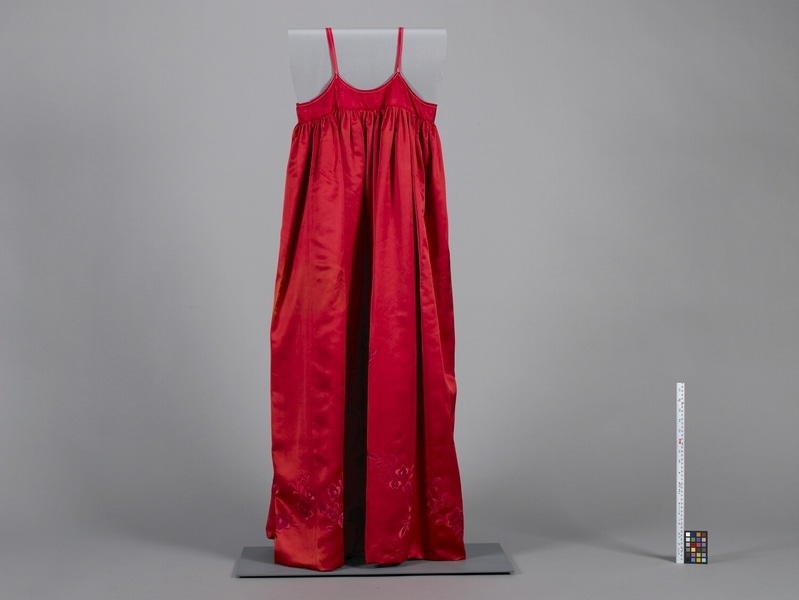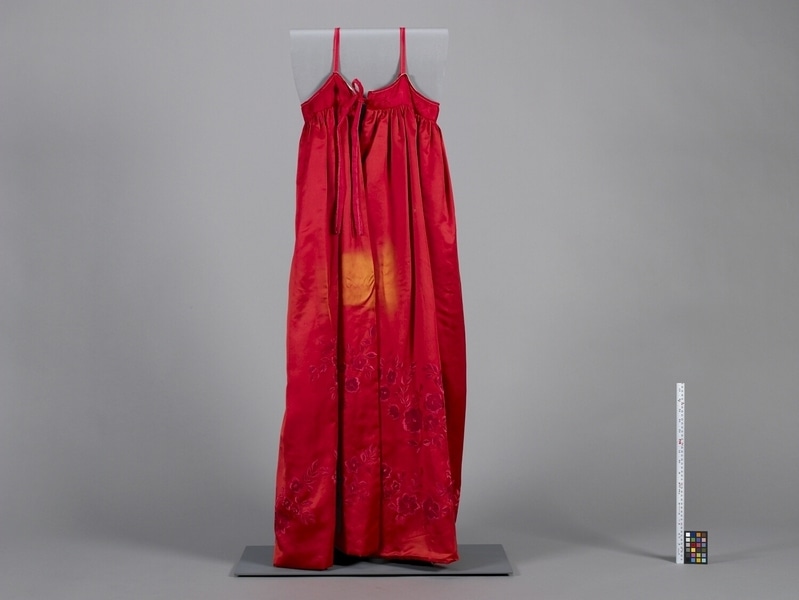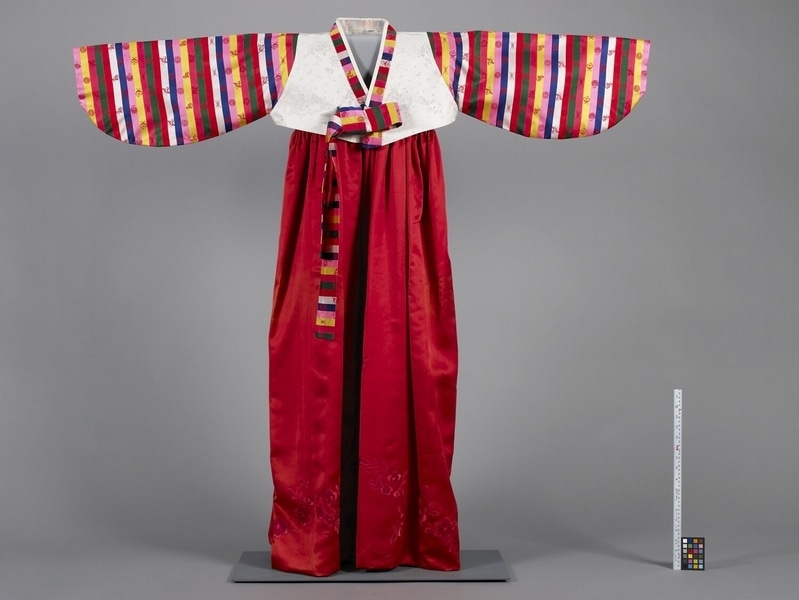Skirt Item Number: 382/4 b from the MOA: University of British Columbia



Description
Skirt of three panels of shiny red brocade with embroidered designs. The designs are embroidered flowers with dull centres and leaves near the lower edge. The skirt is open at the back. The panels are pleated and inserted into a band of red shiny fabric woven with a floral pattern and lined with loosely woven off-white cotton. The pleats carry through to the edge of the band on both sides. The upper edge of the band is scalloped with the points of the scallops meeting two red shoulder straps. At both ends of the band are sewn narrow ties of red fabric, roughly machine stitched with white thread. The inner lining of the panels is red nylon mesh, with an interfacing of coarser white nylon mesh.
History Of Use
The straps attached to the curved shape of the skirt band were innovations introduced after the opening of Korea to the outside world in the late 19th century, replacing the simple waistband with long ties of the traditional “Chi-ma”. The new style was considered to be more modest, as it covered the breasts, and more comfortable. The back opening at that time would be fastened with a safety pin. Such “Chi-ma”, made of synthetic fabrics and worn with jackets “Jo-go-ri” with rainbow “saek-dong” sleeves, were worn by girls and women on festivals and other special occasions. A girl might wear such clothing on her first birthday. By this time the rainbow “saek-dong” sleeves were made of fabric woven in stripes, rather than being pieced as they had been previously. The Korean textile industry had developed to the point that it could produce such fabrics by this time. By the late 1960s, Korean people generally wore simple clothing so that they could work more efficiently. During the 18 years that Park, Chong-hee was president, the transformation of South Korea from an agricultural country to an industrial one was accomplished, and people were urged to work hard. In compensation, people wore elaborate clothing on special occasions. Clothing of this kind was made in markets, and the relatively rough finishing, with the outer fabric folded under to hide the cheaper lining, is typical of that work.
Item History
- Made in Korea during 1967
- Collected during 1967
- Owned by Bomshik Chang before May 5, 1977
- Received from Bomshik Chang (Donor) on May 5, 1977
What
- Name
- Skirt
- Identification Number
- 382/4 b
- Type of Item
- skirt
- Material
- rayon fibre ?, nylon fibre, cotton fibre and dye
- Manufacturing Technique
- spun, dyed, woven, cut and sewn
- Overall
- height 130.0 cm, width 42.0 cm
Who
- Culture
- Korean
- Previous Owner
- Bomshik Chang
- Received from
- Bomshik Chang (Donor)
Where
- Holding Institution
- MOA: University of British Columbia
- Made in
- Korea
When
- Creation Date
- during 1967
- Collection Date
- during 1967
- Ownership Date
- before May 5, 1977
- Acquisition Date
- on May 5, 1977
Other
- Item Classes
- textiles
- Condition
- good
- Accession Number
- 0382/0004 b